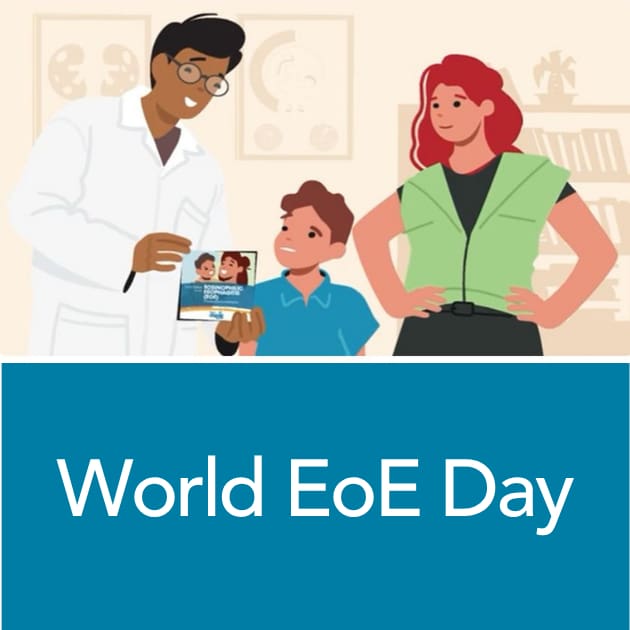May 22 has been designated as the first annual World EoE Day, part of National Eosinophil Awareness Week (May 18-24 in 2025).
There is growing recognition of type 2 inflammation and its effect on allergic conditions. Your College membership provides access to resources concerning Type 2 inflammation, the atopic march and EoE.
Start with the Type 2 inflammation microsite, which has a robust collection of collateral that addresses type 2 inflammation in general; the atopic march; and the individual conditions that can be caused by type 2 inflammation, such as atopic dermatitis, allergic rhinitis, asthma, CRSwNP, food allergy and EoE. Allergists/Immunologists – as well as primary care physicians, advanced practice nurses and patients/parents – will find the site’s interactive graphics, narrative information, patient journey videos, and symptom checklist informative.
The Type 2 inflammatory disease microsite also links to a page just for patients on ACAAI.org for parents and other members of the public, with short animated videos illustrating an adult’s journey with EoE and a child’s experience. The College’s public website also has a page dedicated to EoE.
Next, utilize your College member resources to expand your knowledge of EoE.
Use our teaching tools to help other allergists and primary care physicians understand the pathophysiology of TH2 disease and its role in various inflammatory conditions. The slide set and speaker guide can be personalized to meet your needs.
In less than 25 minutes, learn how to manage the complex EGID patient. Our MicroCME module answers the question, “Is it all about the eosinophils?”
Check out these episodes of the College’s podcast AllergyTalk:
- Does Eosinophil Depletion Improve Eosinophilic Esophagitis?
- How Does the Atopic March Differ in Black and White Children?
- Understanding the Type 2 Inflammation Connection
Help your patients understand EoE and its symptoms, diagnosis, treatment and management.
A new online patient brochure on EoE is available on the member website as a member benefit. The brochure – in both English and Spanish – can be downloaded by members and printed for patient visits. It can also be made available on practice websites and through patient portals to help patients navigate the complexities of the disease.
You can also refer your patients to web pages on the College’s public website (in English and Spanish). The pages provide guidance on symptoms, diagnosis, and the importance of working with both a gastroenterologist and an allergist to treat and manage the condition.
It’s all about eosinophils this week! Use your College member resources to help unravel the complexities of type 2 inflammation, the atopic march and eosinophilic conditions.




